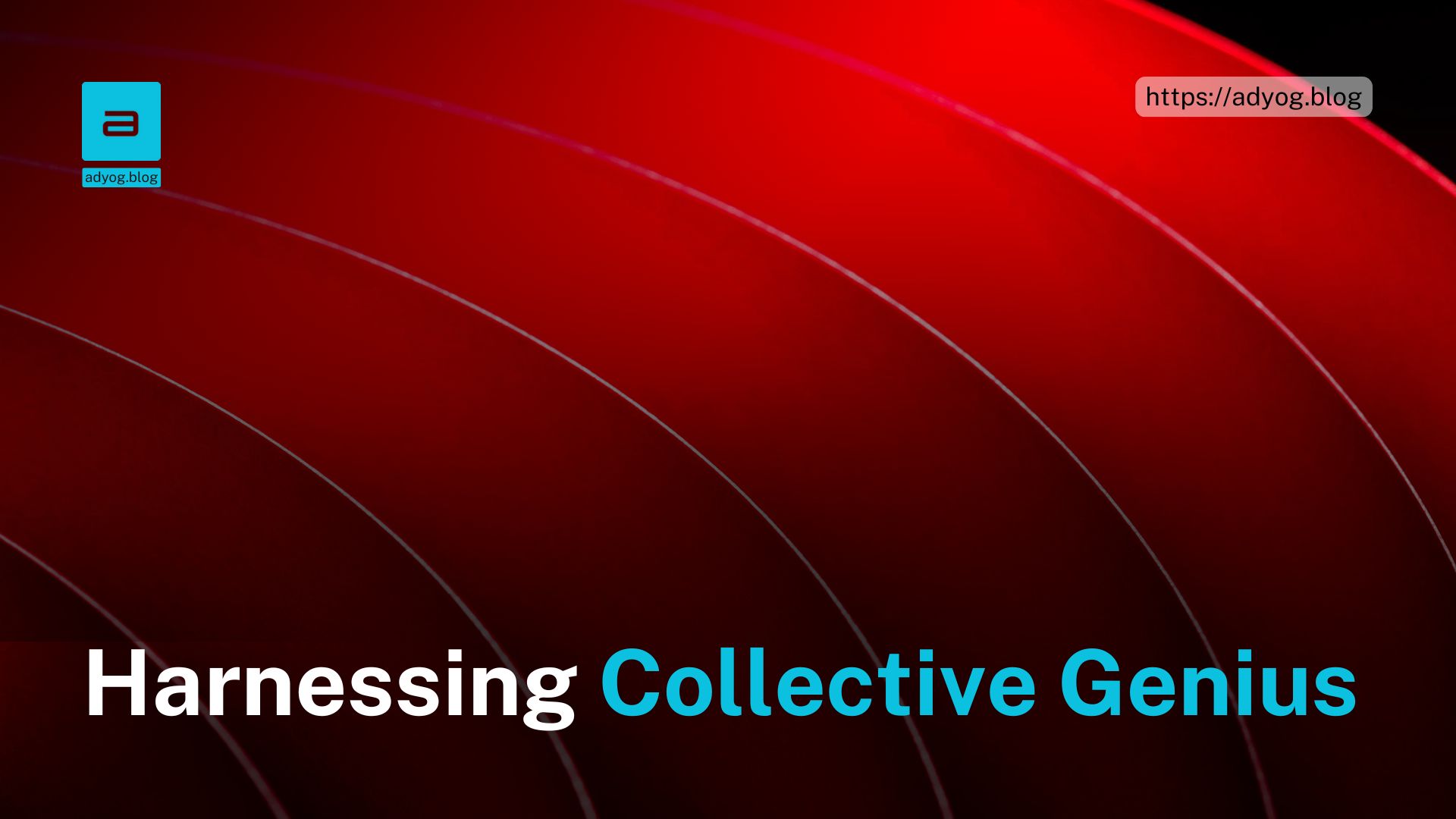Conversational Swarm Intelligence (CSI) is a groundbreaking method for enhancing group collaboration by leveraging AI to break echo chambers and amplify collective intelligence. Through real-time summarization and propagation of ideas across conversation groups, CSI fosters productivity and inclusivity. This blog explores its transformative potential, practical applications, and technical implementation in platforms like Slack, Discord, and Microsoft Teams.
Introduction
In today’s interconnected but often fragmented digital environment, teams worldwide face the challenge of scattered communication. Whether it’s parallel discussions in Slack channels, isolated conversations in Discord servers, or information silos in Microsoft Teams, collaboration frequently suffers. Conversational Swarm Intelligence (CSI) emerges as a revolutionary solution to bridge these gaps effectively.
Inspired by biological swarm behavior, CSI uses AI to summarize and transmit key ideas in real time across conversational groups. Imagine a system that takes the most insightful contributions from one discussion and seamlessly shares them with others. This not only enhances collaboration but also breaks down echo chambers, enabling a truly dynamic exchange of ideas. CSI is no longer just an innovative concept — it’s a practical, actionable framework poised to redefine communication and productivity.
Let’s delve into the mechanics of CSI, its real-world applications, and its potential to revolutionize how we collaborate across digital platforms.
What is Conversational Swarm Intelligence?
At its core, Conversational Swarm Intelligence (CSI) leverages AI to:
- Summarize key points from discussions in one group.
- Propagate those summaries to other groups in real time.
- Facilitate cross-group collaboration and reduce information silos.
This approach was demonstrated in a recent experiment:
- Experiment Setup:
- 25 participants divided into five chat rooms.
- ChatGPT 3.5 summarized and transmitted ideas between rooms every minute.
- Results:
- 30% increase in contributions.
- 7% reduction in variance (i.e., more consistent ideas across groups).
These results suggest that CSI doesn’t just enhance communication — it amplifies engagement and fosters intellectual cross-pollination.
Why CSI is Transformative
The significance of CSI lies in its simplicity and potential to solve real-world collaboration challenges:
1. Breaking Echo Chambers
CSI enables conversations to transcend group boundaries. By sharing insights across teams, it prevents ideas from stagnating in silos and promotes diverse perspectives.
2. Amplifying Collective Intelligence
By surfacing key insights, CSI magnifies the best ideas, ensuring they gain traction across broader networks. This creates a feedback loop where good ideas are refined and expanded upon collaboratively.
3. Real-Time Knowledge Sharing
Traditional knowledge sharing often relies on post-meeting notes or asynchronous updates. CSI operates in real time, ensuring no valuable insights are delayed or lost.
4. Scalability with AI
Using tools like ChatGPT, CSI is both cost-effective and scalable. It can be integrated with existing platforms like Slack or Discord using APIs, making it accessible for organizations of all sizes.
Real-World Applications
Here’s how CSI can be applied in various contexts:
1. Open-Source Collaboration
In large open-source projects with multiple contributors working in parallel, CSI can:
- Surface important discussions from one channel to others.
- Ensure contributors stay aligned on goals and priorities.
2. Corporate Communication
In enterprises using platforms like Microsoft Teams or Slack, CSI can:
- Summarize discussions in different teams and share key takeaways in leadership channels.
- Reduce redundant meetings by keeping stakeholders updated in real time.
3. Social Media and Policy Discussions
For platforms discussing policy issues or societal challenges, CSI can:
- Share valuable ideas across forums or subreddits.
- Encourage cross-pollination of ideas between diverse communities.
4. Crisis Management
In emergency response situations, CSI can:
- Propagate critical updates across teams handling different aspects of the crisis.
- Ensure coordinated decision-making.
How CSI Works: The Technical Breakdown
Implementing CSI is straightforward and leverages existing technologies:
- Gather Data:
APIs from platforms like Slack or Discord provide the raw conversational data necessary for analysis and summarization. - Summarize Discussions:
Language models such as ChatGPT 3.5 can generate concise summaries. Depending on the context, alternatives like BERT or RoBERTa may enhance accuracy, while T5 offers advanced summarization capabilities for more complex datasets. - Distribute Summaries:
AI-generated summaries are distributed to other groups or channels through webhook integrations, ensuring seamless visibility and collaboration. - Iterate and Improve:
Teams provide feedback on summary relevance, which refines the system over time. Adaptive learning ensures the AI becomes more context-aware with every iteration.
Example Workflow:
- Messages are fetched from a Slack channel using a script.
- ChatGPT processes the data to create summaries.
- Summaries are shared in a designated channel for cross-team visibility.
- Feedback loops enable ongoing refinement of the summarization process.
Best Practices for Implementing CSI
To maximize the benefits of CSI, follow these best practices:
- Set Clear Objectives:
- Define what insights need to be surfaced (e.g., decisions, blockers, innovative ideas).
- Choose the Right Tools:
- Use scalable AI models like GPT-3.5 or GPT-4 for summarization.
- Leverage APIs from your communication platform for seamless integration.
- Automate Feedback Loops:
- Enable users to rate summaries to improve AI-generated insights over time.
- Ensure Data Privacy:
- Use encryption and access controls to protect sensitive information.
- Start Small, Scale Gradually:
- Pilot CSI in a few teams or channels before rolling it out organization-wide.
- Plan for Scalability:
- Assess the computational resources needed for processing large-scale data in real time.
- Identify potential performance bottlenecks, such as latency or data volume limitations, and address them during implementation.
- Gradually expand to larger organizations by testing scalability at different stages of deployment.
Challenges and Future Directions
While CSI is transformative, there are challenges to address:
- Accuracy of Summaries: AI models may occasionally miss context or nuance.
- Ethical Concerns: AI-generated summaries might unintentionally misrepresent or distort conversations, leading to misunderstandings or unfair outcomes.
- Privacy Implications: Extracting and processing conversational data requires robust encryption and anonymization techniques to protect sensitive information.
- Manipulation Risks: Malicious actors could exploit CSI systems to propagate biased or misleading information, necessitating safeguards against such misuse.
- Overload of Summaries: Too many updates can overwhelm users; prioritization is key.
- Bias in AI: Language models may inadvertently propagate biases present in the data.
Future Directions:
- Advanced Context Awareness: Incorporate user feedback to improve the contextual accuracy of summaries.
- Personalized Summaries: Tailor insights to the specific needs of different teams.
- Integration with Cognitive Architectures: Combine CSI with cognitive AI frameworks like CoALA for even greater impact.
Conclusion
Conversational Swarm Intelligence (CSI) represents a significant leap forward in how we collaborate and share knowledge. To ensure its successful adoption, user experience plays a critical role. Incorporating principles like user consent and opt-in mechanisms can help build trust and ensure ethical implementation. Additionally, designing intuitive user interfaces, such as mockups for how summaries are displayed in chat platforms, can enhance usability and engagement. By prioritizing these aspects, CSI can achieve its full transformative potential. By breaking echo chambers, amplifying good ideas, and enabling real-time communication across groups, CSI has the potential to revolutionize platforms like Slack, Discord, and Microsoft Teams.
Whether you’re managing open-source projects, leading corporate teams, or fostering policy discussions, CSI offers a scalable, actionable solution to modern communication challenges.
The future of collaboration is here — and it’s intelligent, inclusive, and impactful.
References
- Conversational Swarm Intelligence (CSI) Study
Pilot Study on Conversational Swarm Intelligence (arXiv)
Read the study - Language Models Overview
Understanding Pre-trained Transformers like BERT, RoBERTa, and T5
Learn more about language models - Real-Time AI in Collaboration
How AI is Transforming Communication Platforms like Slack and Discord
Explore AI in collaboration tools - Webhooks and Integration for Automation
API and Webhook Documentation for Slack
Slack Webhook Documentation
API Integration Guide for Discord
Discord API Documentation - Challenges in AI Ethics and Privacy
Ethical Implications of AI in Communication
AI and ethics in communication
Data Privacy Considerations in AI Systems
Data privacy for AI - Future of Cognitive Architectures
Cognitive Architectures for Language Agents (CoALA)
CoALA paper on arXiv - Adaptive Learning and Feedback in AI Systems
Designing AI Feedback Loops for Continuous Improvement
Explore feedback systems - Best Practices for Scalable AI Systems
Google’s Guide to Building Scalable AI Workflows
Read Google AI scalability guide





Leave a Reply